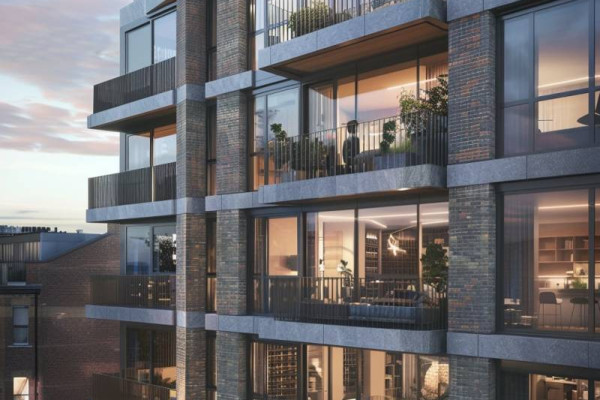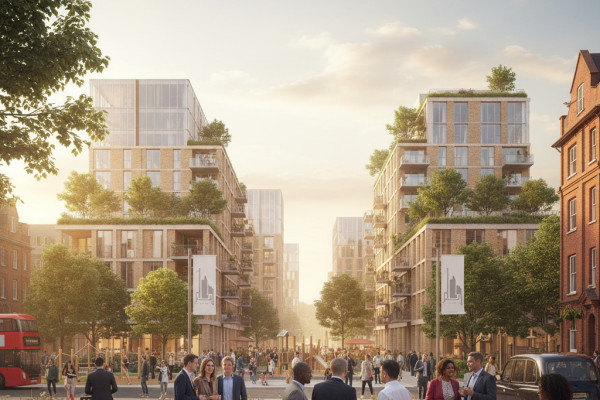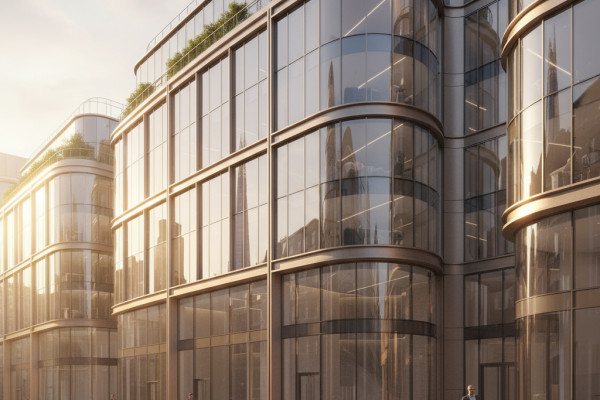
London's Luxury Real Estate Prices Retreat to Early 2014 Valuations
In a recent analysis by 1newhomes, London's prime real estate market witnessed a significant downturn in February, with the average sale price for high-end homes declining by 7.8% compared to the previous year.

This drop places property values at a point not seen since the early months of 2014. Although the volume of transactions in February dipped slightly by 2.7% year-over-year, the overall market activity remained resilient, showing better performance than property valuations.
Comparatively, the sales figures for February 2024 closely matched those of February 2017-2019 with a minor decrease of 0.3%.
Market Trends and Tax Policy Adjustments
A decrease in property valuations was noticed in February, which brought the prices down to levels reminiscent of early 2014.
However, various market indicators such as the rate of discounts, the frequency of price reductions, and the duration properties stay on the market are mirroring long-standing trends, indicating that the market dynamics are typical of what we've seen in the past.

The minor adjustments in property tax policies announced in the March 6 Budget, impacting the following aspects:
- holiday rentals,
- relief for multiple dwellings,
- capital gains,
- the removal of the 'non-dom' status.
It's yet to be determined whether these policy changes will significantly influence the prime London market's demand and supply.
The High-End Market's Strong Performance
The luxury segment of the market, specifically properties priced above £5 million, stood out for its robust performance. Sales in this category for February surpassed the previous year by 4.2% and were 25% higher than the February average for the years 2017-2019, before the pandemic struck. New listings for these luxury homes saw an annual increase of 8.4%.
By the end of February, the stock of available homes in this premium bracket had expanded by 26% compared to the year before.

The luxury market continues to exhibit strong activity, significantly outpacing the average transaction levels observed between 2017 and 2019. The 4.2% increase in transactions this February, over last year, coupled with a quicker pace of new listings, has led to a 26% growth in available stock in this sector over the past year.
Rental Market Signs of Stability and Growth
On the rental front, London's prime market showed encouraging signs of stability in February. The sector experienced a surge in activity, with annual rental growth slightly increasing by 3.4% after a sequence of decreases in the preceding months.
This adjustment positioned rental prices 26.7% above their average before 2020. New rental agreements in February were 14.2% higher than the same period last year, although this was 48.7% lower than the February averages of 2017-2019.

There was also a 17.6% year-over-year increase in new listings last month, though this figure was still 42.0% below the pre-pandemic February average.
The rental market has long-faced a shortage of supply, but the early part of this year is showing promising signs of an uptick in new listings.
The inventory has nearly doubled compared to last year.
After months of declining growth, annual rental rates have begun to stabilize at approximately 3.5%, and our metrics for discounts and price reductions are realigning with what would be considered standard levels.




